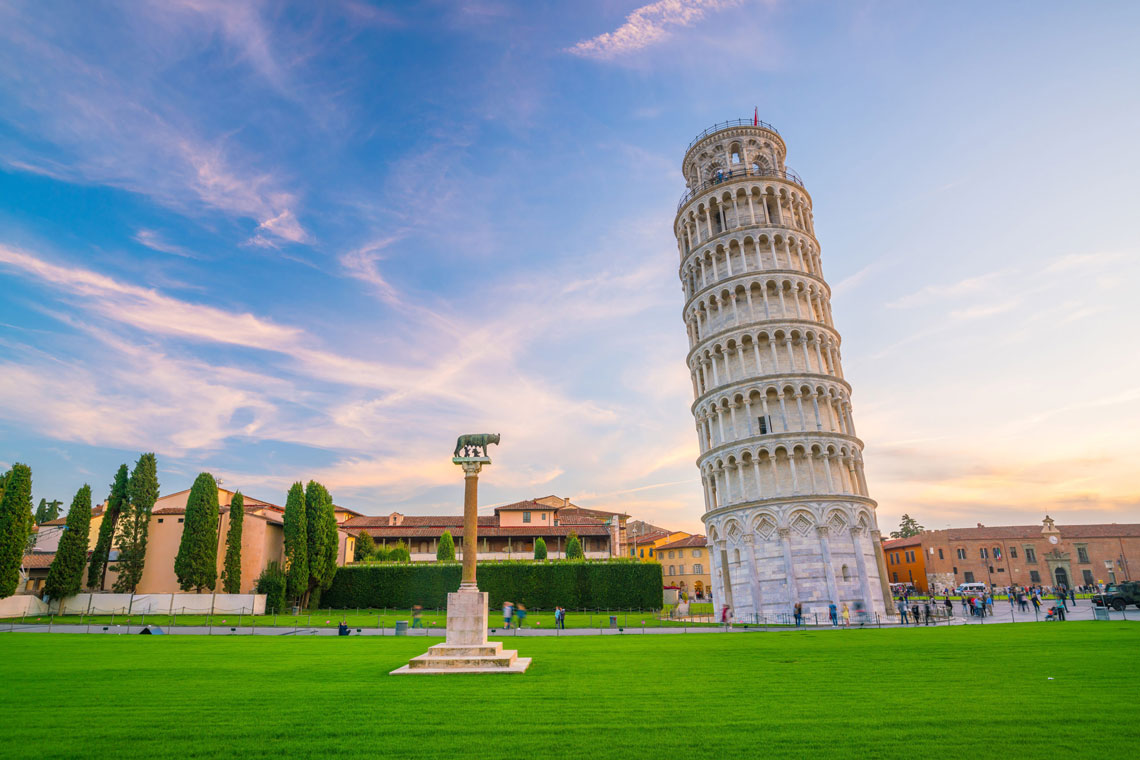
The Leaning Tower of Pisa has gained worldwide fame due to its unintentional tilt. This bell tower is part of the ensemble of the Pisa Cathedral in Pisa, Italy.
Located behind the cathedral, the Leaning Tower of Pisa is the third oldest building in Pisa's Miracle Square.
The Square of Miracles is a huge walled square in the old part of the Italian city of Pisa, one of the most famous examples of medieval architecture. It houses four masterpieces of medieval architecture: the Pisa Cathedral, the Leaning Tower of Pisa, the Baptistery and the Campo Santo cemetery. In 1987, the entire architectural ensemble of the Square of Miracles was included in the UNESCO World Heritage List.
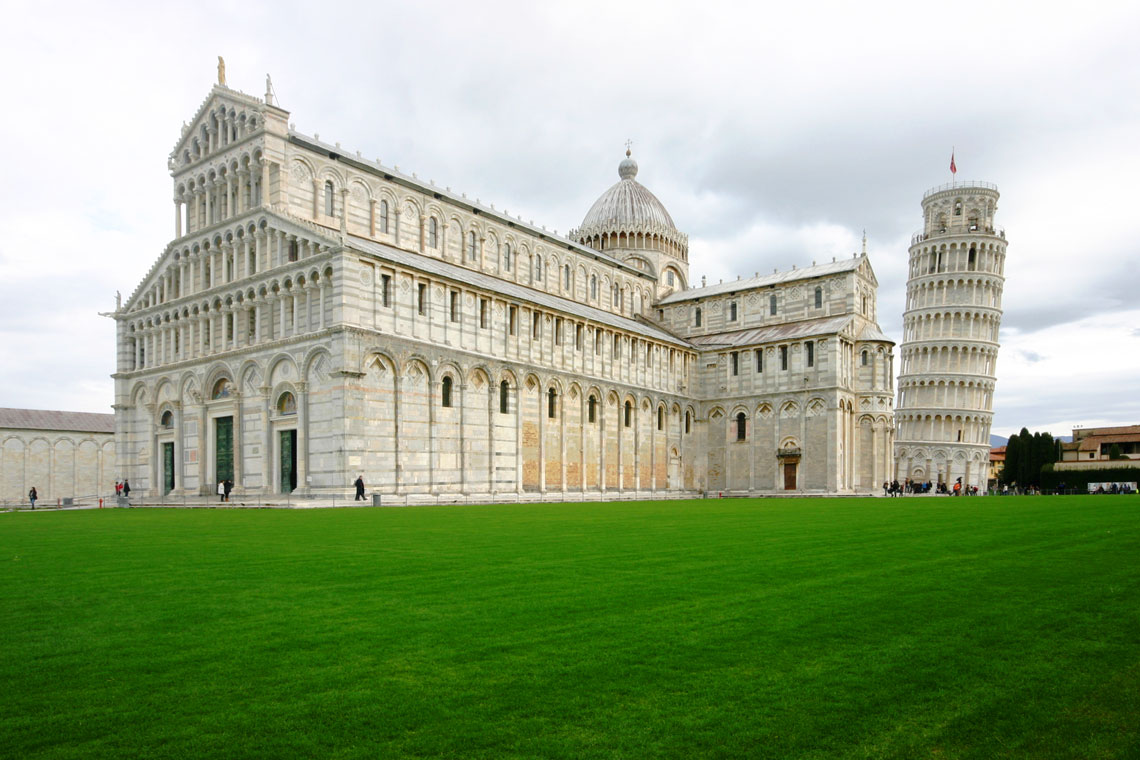
Pisa Cathedral on the Square of Miracles | wikimedia.org

Baptistery of St. John on Square of Miracles | pixabay.com

Leaning Tower of Pisa, Pisa Cathedral and Baptistery in Square of Miracles | shutterstock.com
The slope of the Leaning Tower of Pisa originated during its construction, which lasted several decades and then slowly increased in the following time, until it was stabilized (and partially corrected) by fortification efforts in the late 20th and early 21st centuries.
The current tilt of the Leaning Tower of Pisa is estimated at 3° 54'.
The tower is built of white marble. Its mass is 14 tons.
The Leaning Tower of Pisa has 294 steps. Its height is 55,86 meters from the ground at its lowest point and 56,7 meters at its highest point. The diameter of the base is 15,54 meters. The thickness of the outer walls decreases from the base to the top (at the base – 4,9 meters, at the height of the galleries – 2,48 meters).
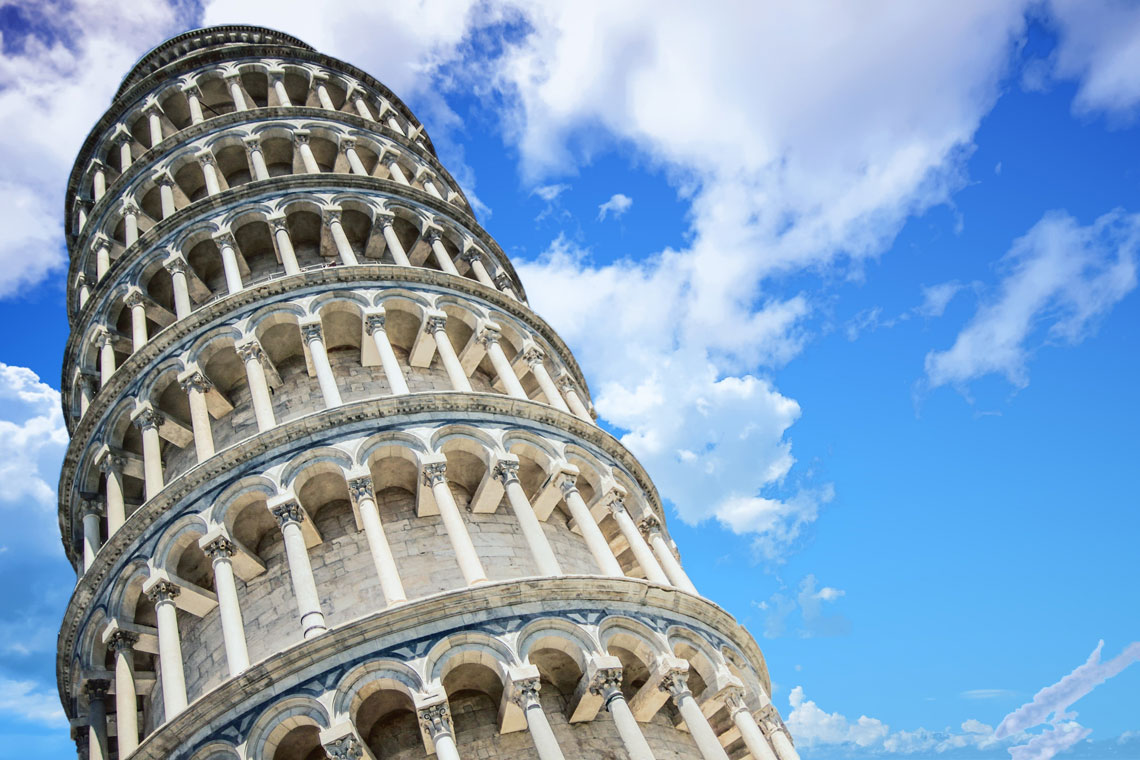
About building the tower
The author of the project is the Italian sculptor Bonanno Pisano. The construction of the tower was carried out in 3 stages, starting from August 9, 1173, and with two long breaks lasted almost 200 years, until 1360.
It was previously believed that the "tilt" of the tower was part of the project, but this version now seems unlikely. The design of the tower was erroneous from the very beginning – the combination of a small three-meter foundation and weak base soils led to the fact that after the construction of the third floor (1178), the tower leaned. The foundation was strengthened, and in 1198 the unfinished building was temporarily opened.
Although the tower itself is tilted, the bell tower, built in the second half of the 14th century on top of the tower, stands at the angle at which the tower was tilted at that time. Therefore, at the moment, both parts of the building look skewed.
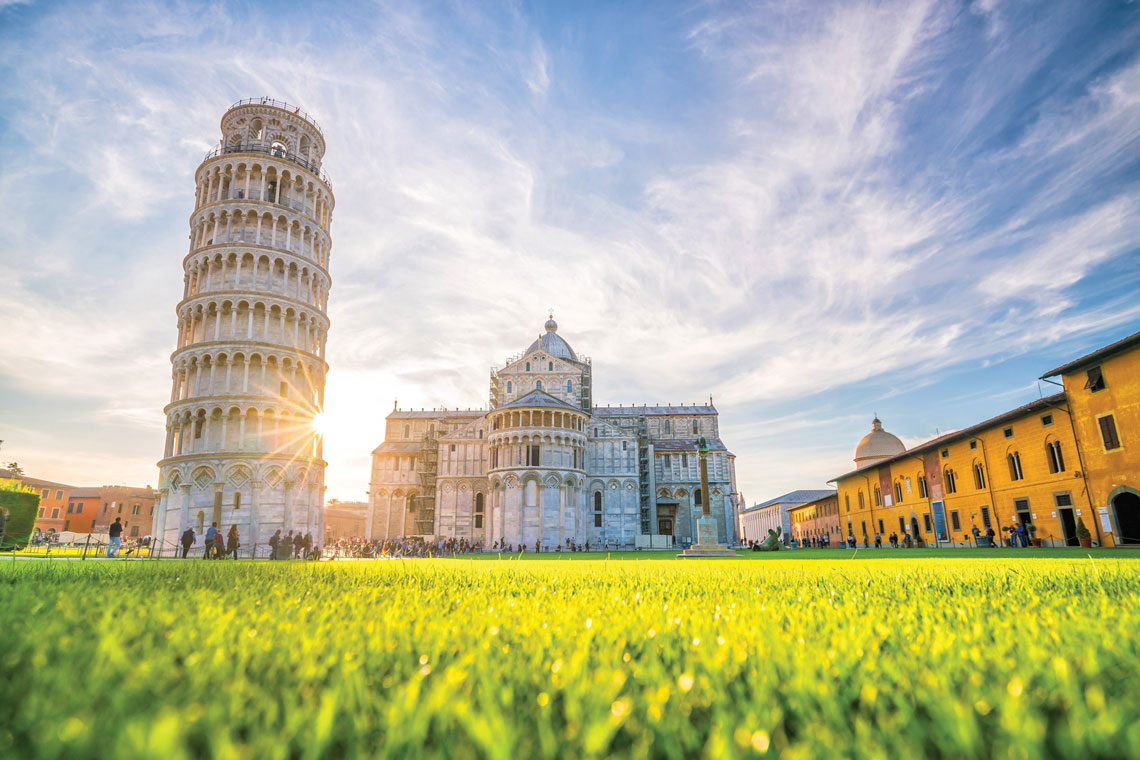
Interesting Facts About Leaning Tower of Pisa Leveling
Both because of the slope and because of the original architecture, from 1173 to the present day, the tower has been the object of intense attention. Efforts are constantly being made to make the tower more stable. For example, collapsing columns were repeatedly replaced. Currently, underground work is being carried out to strengthen the foundation.
Under the southern part of the Leaning Tower of Pisa, the ground is more silty and clayey than under the northern one, which is why it began to lean as soon as it was built. It would be very difficult to keep the tower from falling with the help of external supports, and, moreover, any frame would inevitably spoil the look of the monument. Nevertheless, the fall of the Leaning Tower of Pisa was stopped, and moreover, it was slightly straightened, reducing the slope by half a degree. All this was the result of unique works carried out under and around the bell tower in the 1990s.
As a temporary measure on the north side (the tower, remember, falls to the south), a block of lead bars was installed on concrete beams, which, acting as a counterweight, stabilized the structure. Then the nonlinear processes that took place in the soil under the foundation of the tower were investigated, after which a series of experiments followed with a concrete foundation model specially erected near the monument. Experiments have confirmed that the tower can be slightly straightened and stabilized if a piece of hard ground is removed from under the northern part of the foundation, that is, a so-called side work is carried out. It must be understood that the side work had nothing to do with ordinary earthworks – the soil was selected literally by a millimeter through a system of casing pipes, inside of which a rotating auger drill was placed.
The calculations turned out to be correct, and the Leaning Tower of Pisa, deviating slightly to the north, settled a few centimeters and stabilized, which made it possible to remove both the lead counterweights and the temporary supports set up for safety.
Once again, on December 15, 2001, the tower was opened to tourists.
In 2008, scientists once again declared that the further fall of the Leaning Tower of Pisa had been stopped. Prior to this, despite numerous efforts to "freeze", the tower continued to deviate from the vertical at a rate of 1 mm per year.
In 2002–2010 the tower was restored, as a result of which its angle of inclination was reduced from 5 ° 30' to 3 ° 54".


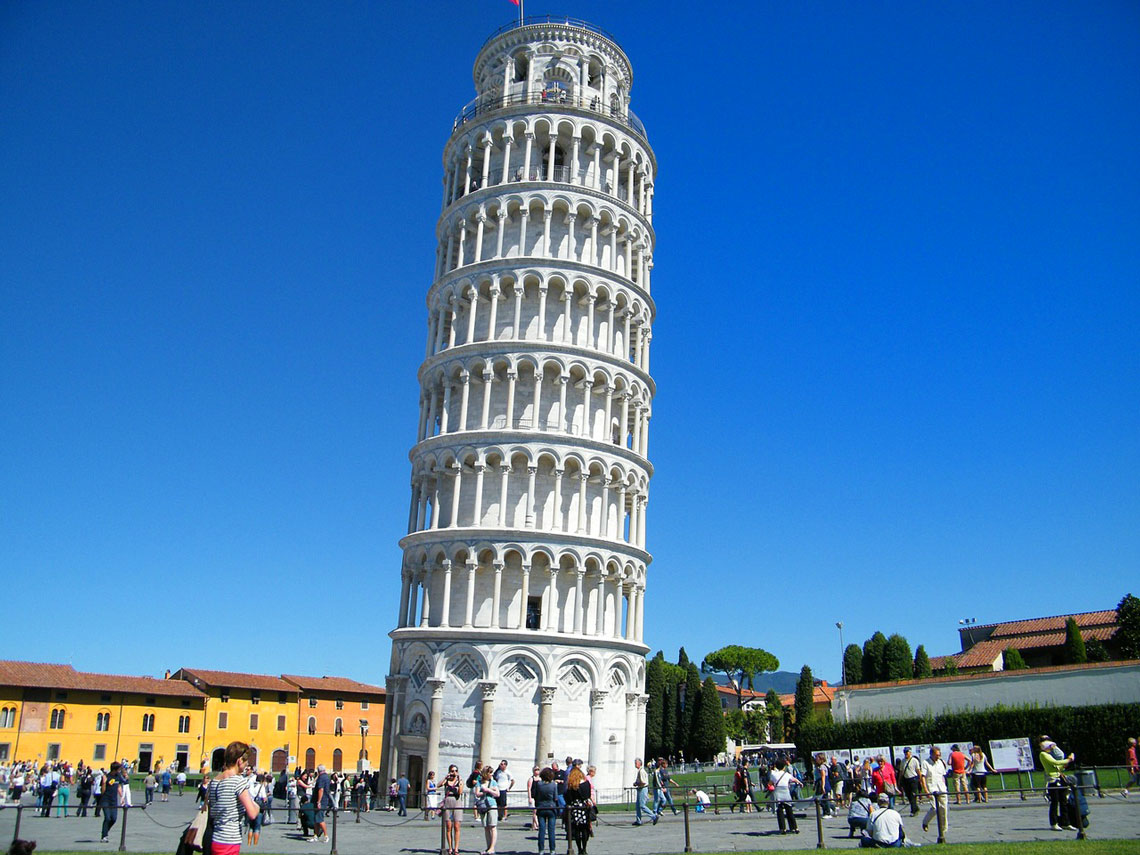
Misconception about Galileo's experiments
According to the biography of Galileo, written by his student and secretary Vincenzo Viviani, Galileo, in the presence of other teachers, simultaneously dropped various bodies of different masses from the Leaning Tower of Pisa. The description of this famous experience has been included in many books.
However, in the 20th century, a number of authors came to the conclusion that this is a legend, based primarily on the fact that Galileo himself did not claim in his books that he had conducted this public experiment. Some historians, however, are inclined to believe that this experiment really took place.
Other interesting facts
- The name "Leaning Tower of Pisa" has long become a household name – this name is often given to any other structures that noticeably deviated from the vertical, or unstable vertical structures.
-
On November 22, 2018, experts from the University of Pisa reported that the roll (tilt) of the tower is decreasing, and over the past 20 years it has leveled off by 4 cm.
- There are about 300 towers in the world that also have slopes. However, the slope of all these structures is small and does not pose a threat of falling.
-
In June 2010, the Guinness Book of Records certified the Capital Gate building in Abu Dhabi, UAE, as the building with the largest slope in the world – it has an 18 degree slope, which is almost 5 times more than the Leaning Tower of Pisa, although such a slope was intentionally designed. And in New Zealand, there is the Wanaka Leaning Tower, which is also intentionally built at an angle, but its slope is as much as 53 degrees to the ground.
- In the city of Niles (a suburb of Chicago), Illinois, USA, a water tower was built in the form of an exact copy of the Leaning Tower of Pisa in 1/2 life size.
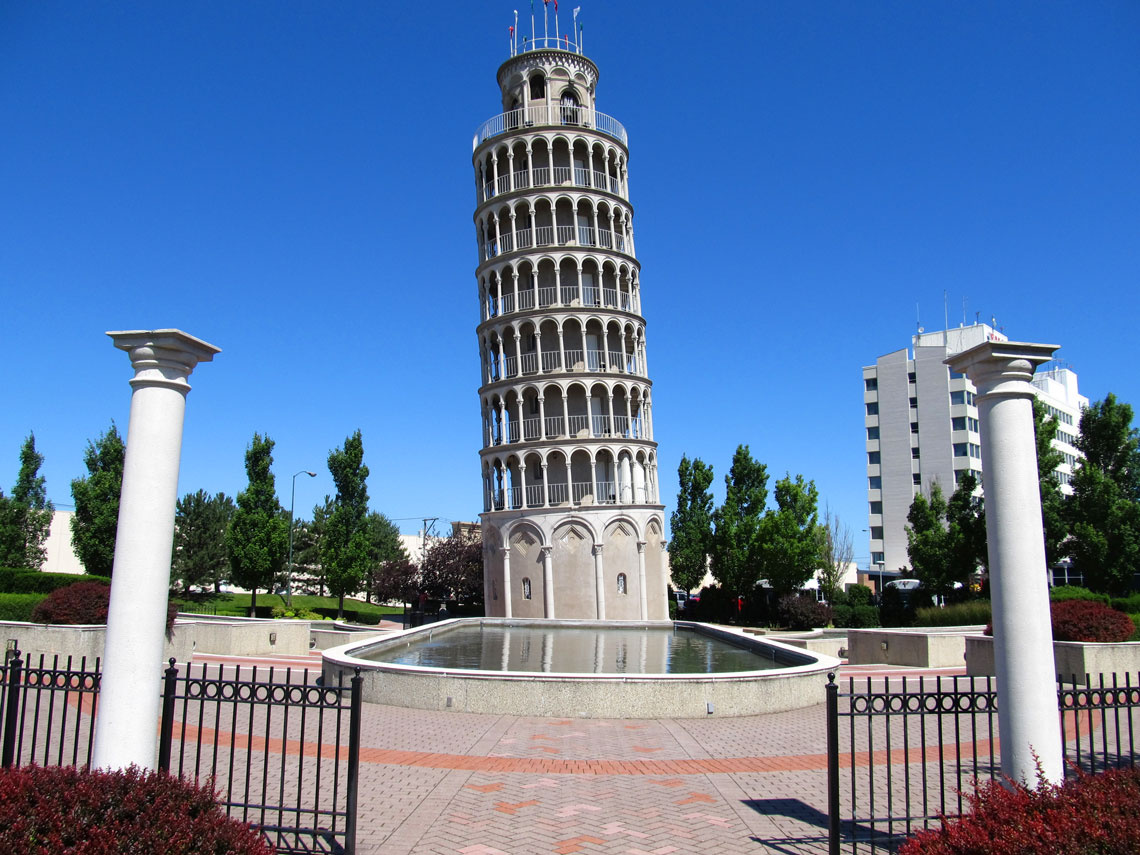
Leaning Tower in Niles, Illinois, USA | wikimedia.org
Leaning Tower of Pisa: 2020
Leaning Tower of Pisa: Virtual Tour
In the video player, you can turn on subtitles and select their translation into any language in the settings
Leaning Tower of Pisa: Eagle and Tails
In the video player, you can turn on subtitles and select their translation into any language in the settings
We also recommend:
◆New seven wonders of the world
◆Gardens by the Bay is the most amazing park complex in the world!










